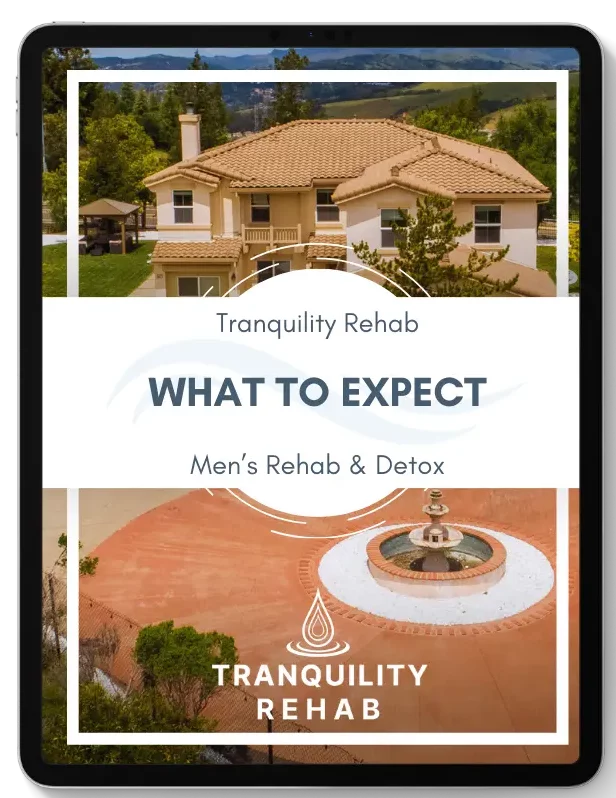Whether you’re new to recovery or years into sobriety, cravings can still hit hard and fast. They may come out of nowhere—a smell, a memory, a stressful situation—and suddenly, you feel like you’re back at square one. If that sounds familiar, you’re not alone. At Tranquility Rehab, we know firsthand how real and overwhelming cravings can be. But here’s the good news: cravings don’t have to win. With the right tools, mindset, and support, you can build the kind of resilience that keeps you steady—even when the cravings get loud.
Why Cravings Happen
Before we dive into how to build resilience, let’s talk about what cravings actually are. In short, a craving is an intense desire to use a substance, often triggered by stress, boredom, trauma reminders, or even celebration. Cravings can be psychological, physical, or both—and they’re one of the most common reasons people relapse.
According to the National Institute on Drug Abuse (NIDA), addiction physically alters the brain, especially areas linked to reward, stress, and self-control. That’s why even after detox, your brain might still associate certain people, places, or feelings with substance use, leading to cravings.

Understanding Triggers: The First Step to Resilience
Think of triggers as sparks, and cravings as the fire. One of the most powerful ways to prevent cravings from taking over is to identify and manage your personal triggers.
Some common ones include:
- Stress or anxiety
- Loneliness or isolation
- Relationship conflict
- Celebrations or parties
- Boredom or lack of routine
- Specific locations or people associated with past use
At Tranquility Rehab, our clinical team works closely with clients to map out their personal triggers during treatment. This helps take the mystery out of cravings—and gives you more control.
Building Resilience: What It Really Means
Resilience doesn’t mean you never feel cravings. It means you have the emotional strength, strategies, and support to face them without giving in. Here are a few proven ways to build resilience in recovery:
1. Create a Daily Routine
When your life has structure, your mind and body feel more grounded. A regular routine—including consistent meals, sleep, work, and self-care—helps reduce stress and keeps you focused. Research shows that individuals with structured routines are less likely to relapse.
Even simple habits like journaling in the morning or walking after dinner can reinforce a sense of stability, which naturally makes it easier to resist cravings.
2. Practice Mindfulness and Grounding Techniques
When a craving hits, your nervous system often kicks into high alert. Mindfulness helps you slow down and observe the craving without judgment. This pause creates space between feeling and reaction—a key part of resilience.
Try these simple grounding strategies:
- 5-4-3-2-1 Technique: Name 5 things you see, 4 you can touch, 3 you hear, 2 you smell, and 1 you taste.
- Deep breathing: Inhale for 4 seconds, hold for 7, exhale for 8.
- Body scan meditation: Mentally check in with each part of your body to release tension.
Studies have shown that mindfulness practices can reduce substance use and cravings by enhancing emotional regulation.
3. Lean on Your Support Network
You don’t have to do this alone. One of the strongest predictors of long-term recovery is having a support system. This might be a therapist, sponsor, support group, or sober friends who understand what you’re going through.
Groups like SMART Recovery or 12-step programs offer tools and community, both in person and online. Research from the Substance Abuse and Mental Health Services Administration (SAMHSA) shows that peer-based support can lead to higher levels of self-efficacy, lower relapse rates, and improved quality of life.
4. Have a Craving Plan
When cravings hit, the worst thing is to be caught off guard. That’s why having a plan is crucial.
Here’s what a simple craving action plan might look like:
- Acknowledge the craving without judgment: “This is a craving. It’s uncomfortable, but it will pass.”
- Engage in a distraction: Call someone, go for a walk, play music, draw—whatever breaks the thought loop.
- Use your tools: Try a grounding technique or journal about how you’re feeling.
- Remind yourself of your “why”—your reasons for getting sober in the first place.
- Get support: Call a sponsor, therapist, or supportive friend.
Remember: cravings usually peak and subside within 20 minutes. If you can ride the wave, you’ve won.
5. Celebrate Your Progress
Resilience grows when you notice it. Every time you resist a craving, no matter how small it seems, that’s a win. Celebrate it. Track your progress. Whether it’s one day, one week, or one month sober, those moments build confidence.
You Are Stronger Than the Craving
Cravings might feel overpowering in the moment, but they don’t define you. Every time you say no, every time you pause, breathe, and choose your recovery—that’s resilience in action. And the more you practice it, the stronger it gets.
Whether you’re just starting out or need extra support along the way, Tranquility Rehab is here to walk with you. Your recovery is worth it—and so are you. Contact Tranquility Rehab today to learn more about our programs and how we can help you stay strong and sober—one day at a time.


